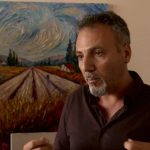Behind the Artist: Itzchak Tarkay
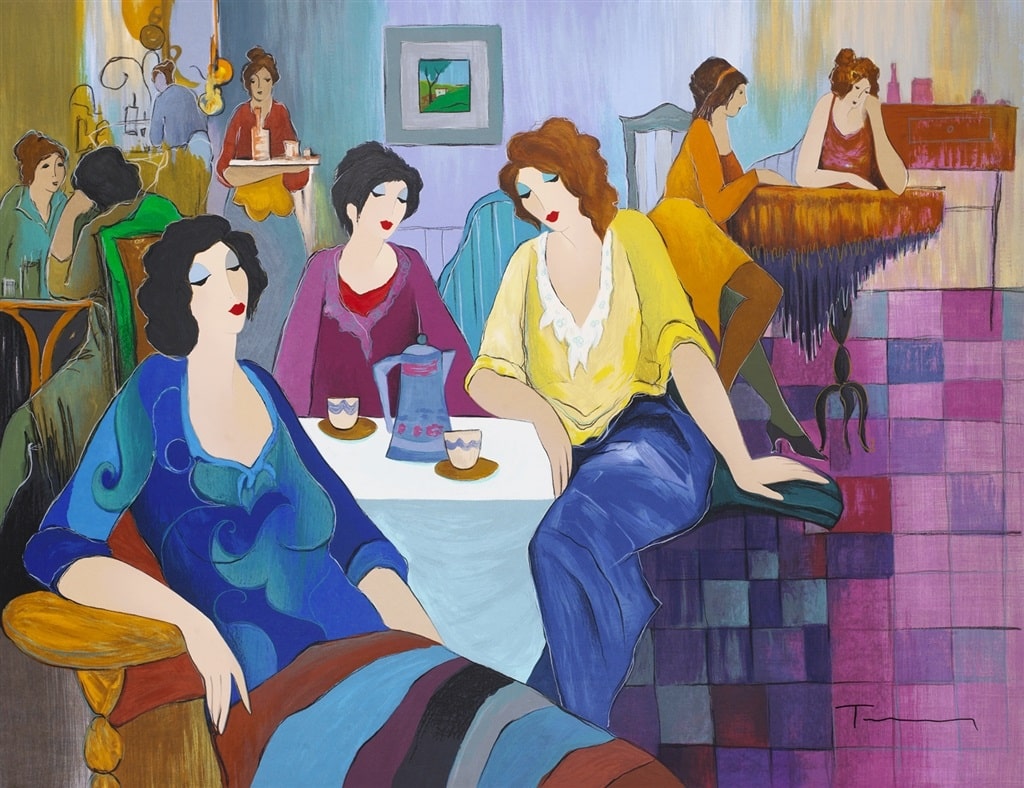
“Casual Talk,” Itzchak Tarkay
In the art and philosophy of Itzchak Tarkay, the bounties of life await at the bottom of a coffee cup, within an armchair or a flower vase, in the composure of a woman, or amidst the company that comforts you – if only you choose to grasp them.
The Israeli master is renowned for his perceptive studies on people and place in the wake of modernity, embodied in image by collected female socialites, parlors, terraces, and quiet cafés. In our day-to-day, these entities have been culturally removed from our experience, yet Tarkay grounds his imagery in the charisma of a world long-forgotten, and enchants our modern imagination in doing so.
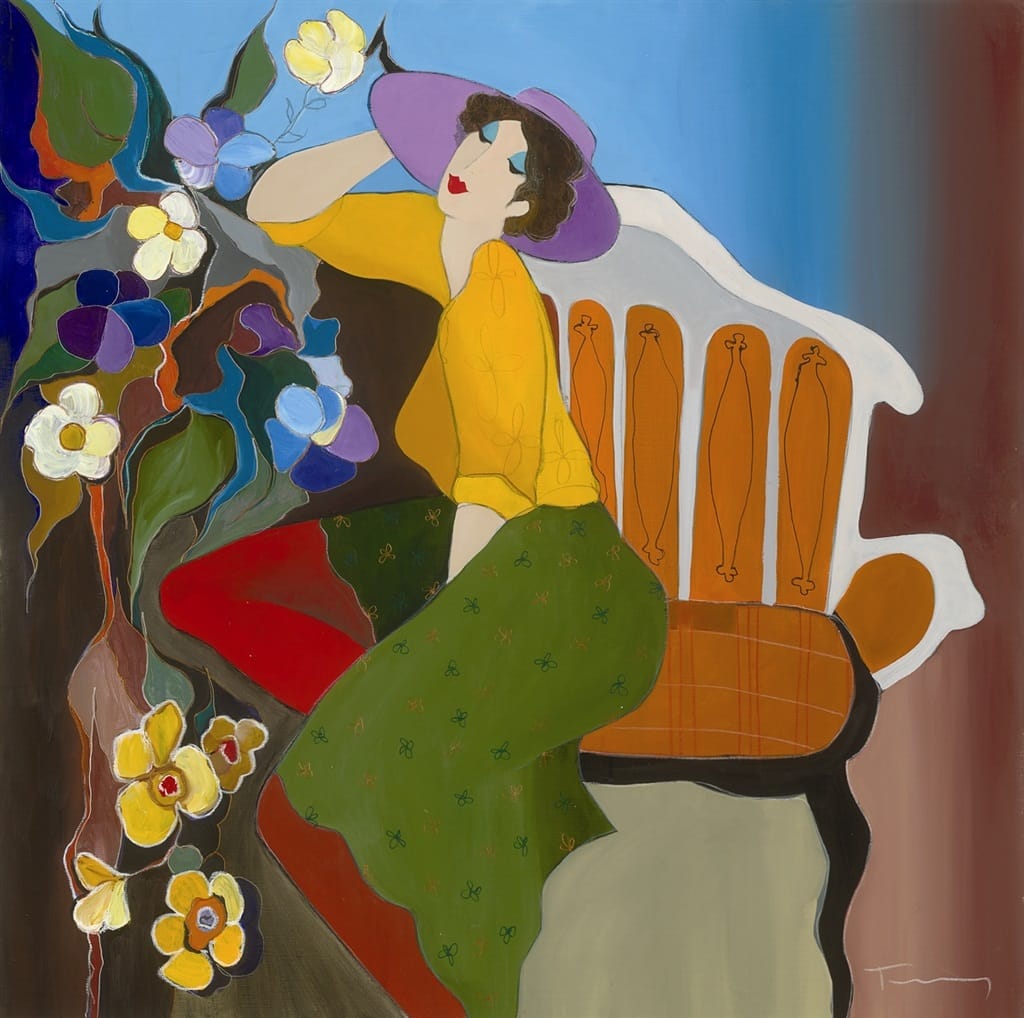
“Distinctive Flair,” Itzchak Tarkay
In Tarkay’s oeuvre, the sentiments of a pre-industrial world are delicately resurrected, leaving the viewer to wonder: what is left to be desired in an age where little stands still?
Recognized as a quintessential pioneer of the figurative movement, below are three details about Itzchak Tarkay that forge a broader understanding of his practice and person.
Overcoming Strife and Sadness
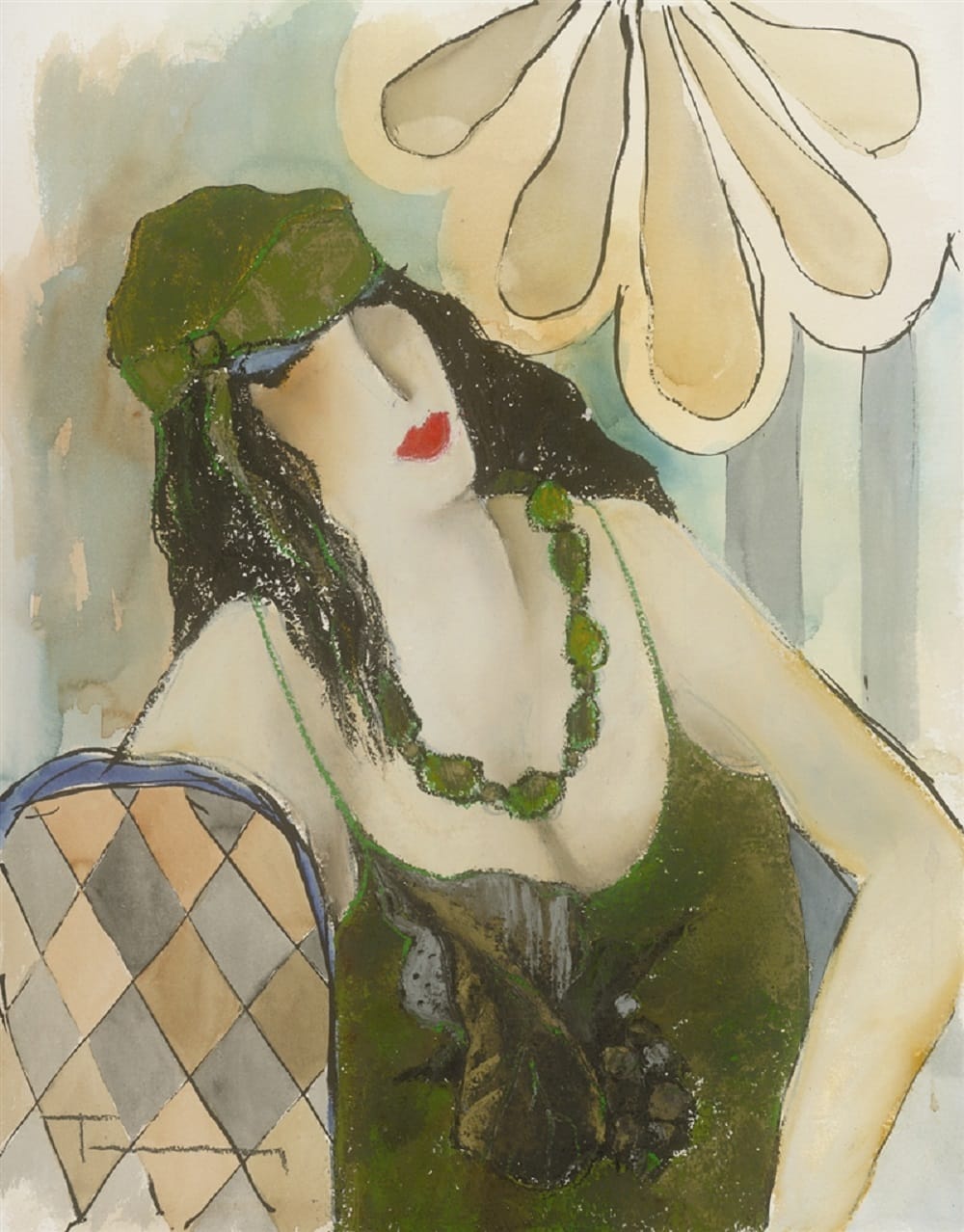
“Una Affaire Francaise,” Itzchak Tarkay
There is little to suggest that a storm lies beneath the serene joie de vivre of a Tarkay. Although Tarkay so beautifully illustrates the favors of life, the artist himself was denied many of the blessings he depicted.
As a young child, the gifted artist and his family were sent to Mauthausen-Gusen Concentration Camp as the oppression of Nazi occupation raged through Europe. A year later in 1945, Allied troops liberated the camp’s prisoners, and Tarkay and his family eventually found sanctuary in Israel in 1949.
In the picture of Tarkay as an artist, not an ounce of pessimism, anguish, or rage exists. A true master of his craft and his sensibility, Tarkay commanded only the good.
Humbled in Significance
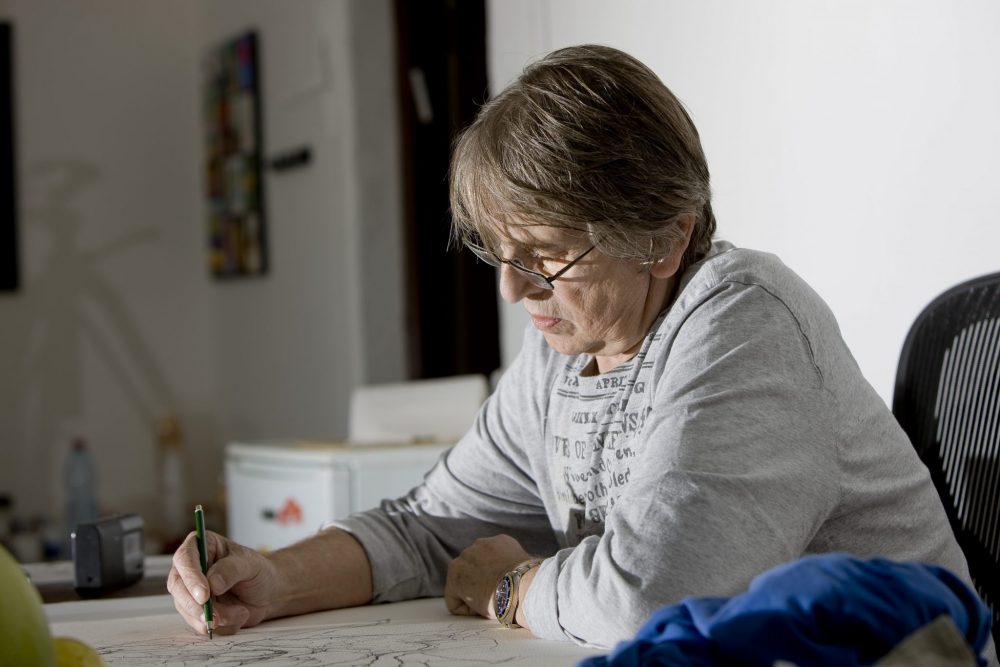
Itzchak Tarkay working in his studio.
There is no denying that Tarkay re-envisioned the definition of the “contemporary artist.” As a graduate of the highly-esteemed Avni Institute of Art and Design of Tel Aviv in 1956, Tarkay was thrust into an artistic era where Minimalism, Performance, and Abstract Expressionism reigned. In many ways, however, Tarkay’s imagery prefaces the work of his fellow contemporaries, while also appealing to the timeless traditions of art history. In kind, Tarkay’s artwork is perpetually contemporary.
In a rare one-on-one interview in 2006 with Park West Gallery Director Morris Shapiro, Tarkay shared which great artists influenced his work. He affirmed his admiration for Henri de Toulouse-Lautrec, Paul Cézanne, Camille Pissarro, and Paul Gauguin, while confessing that Henri Matisse’s fluency made him “jealous.”
Tarkay wouldn’t be likely to agree with or speak toward his success, however. Known for skirting compliments and avoiding chit-chat, the artist was a humble, introverted, and an unassuming individual.
Influence Spanning the Globe
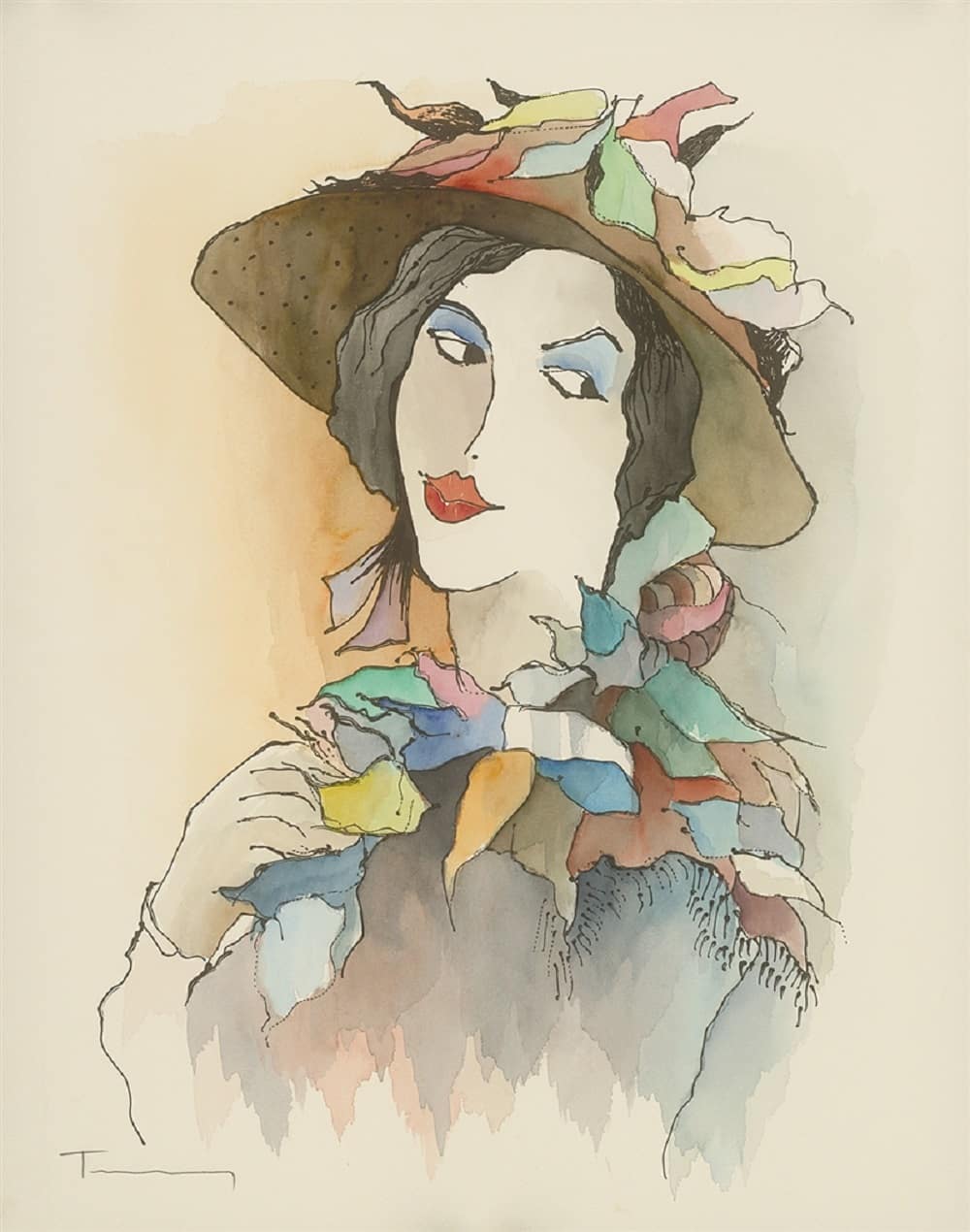
“A Fancy Affair,” Itzchak Tarkay
Tarkay initially realized great success when the artist opened and ran the first firm in Israel to use scanners in the printing industry. This pioneering spirit fostered a burgeoning artistic community founded on collaboration, free expression, and contemporary discourse.
Exactly three decades after the Avni Institute, Tarkay exhibited an extensive collection of unique paintings and serigraphs at the International Art Expo of 1986 in New York City, where he became acquainted with Park West Gallery Founder and CEO Albert Scaglione. Tarkay exhibited alongside Park West for decades, forging a once-in-a-lifetime partnership.
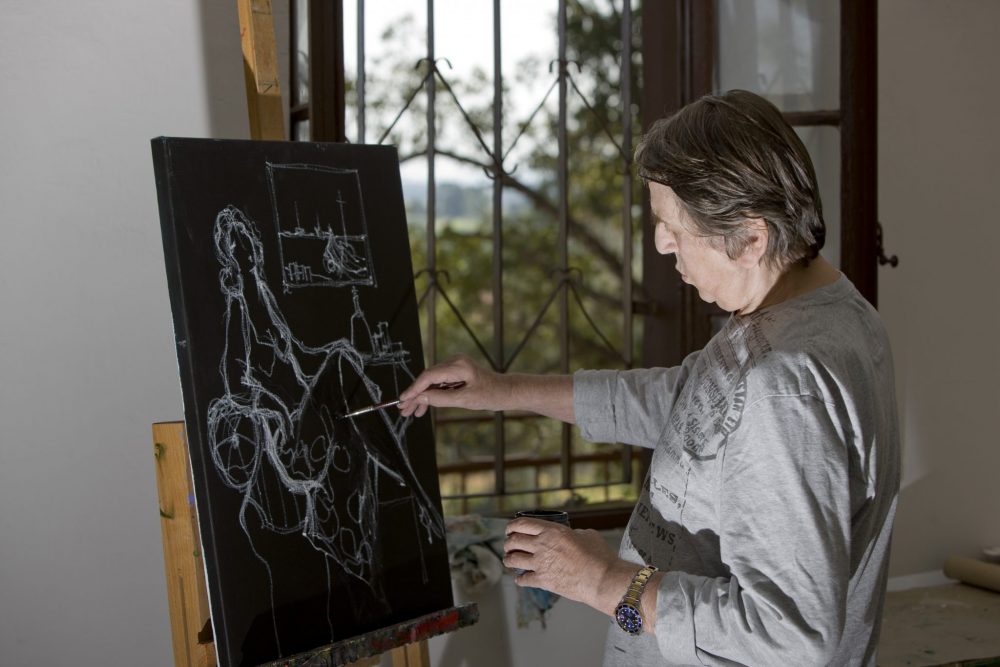
Itzchak Tarkay painting one of his women.
Tarkay held solo exhibitions across the United States and around the globe in London, Hong Kong, Paris, Madrid, Dusseldorf, and Tel Aviv, among many others.
To add an Itzchak Tarkay to your collection, register for our exciting online auctions or contact our gallery consultants at (800) 521-9654 ext. 4 or sales@parkwestgallery.com.





